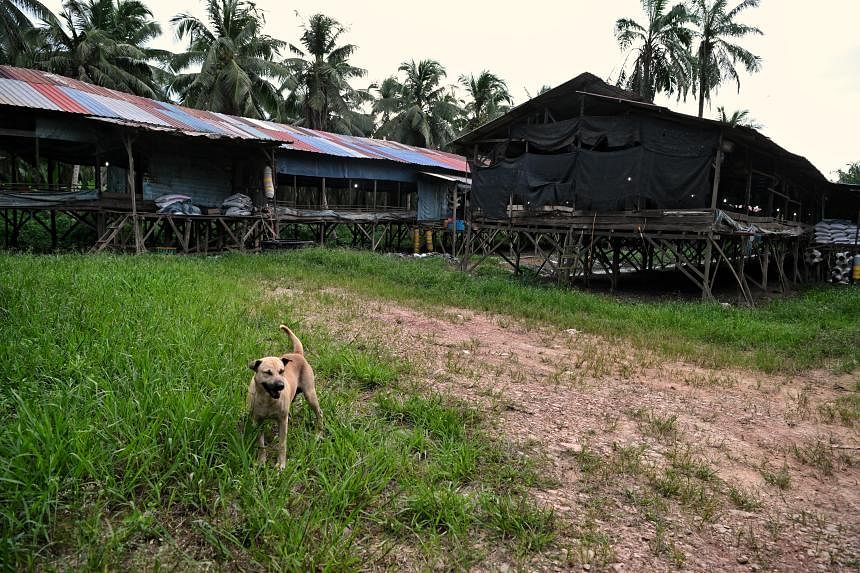PETALING JAYA – Malaysia’s agricultural sector is grappling with the harsh effects of scorching temperatures and dwindling water supplies that pose significant challenges to crop cultivation and livestock farming.
Federation of Vegetable Farmers Associations president Lim Ser Kwee said farmers are worried that the “dual combination” could result in losses and supply chain disruptions.
“In the past two weeks, there has been no rainfall, causing river water levels to drop,” he said.
“While vegetable farms upstream may still have sufficient water supply, those downstream are facing reduced water supply.”
He said farmers worry there will be a 10 per cent reduction in vegetable planting if the hot weather persists without any rain soon.
Mr Lim said the hardest-hit areas were Johor, Penang and Melaka, where extreme heat has led to water shortages in some vegetable farms near rivers and caused delayed harvests.
“Leafy vegetables take 30 days to mature and are now experiencing delays of up to five days due to reduced watering. This is causing some vegetables to wither,” he said.
Mr Lim also said crops such as cucumber require watering twice a day, while leafy vegetables need ample watering, unlike okra which is watered once every two days, or cabbage which requires even less watering.
He lamented the lack of government policies to assist local farmers facing climate-related impacts and said reliance on imported vegetables would only drive up prices for consumers.
Cameron Highlands, which is known for its year-round temperate weather, has not been spared the hot and dry spell.
Cameron Highlands Vegetable Growers Association deputy president Lau Weng Soow said highland water supply has decreased, resulting in lower river-water levels because of lack of rainfall over the past two weeks.
He said climate change in recent years has resulted in irregular weather patterns such as scorching conditions during the dry season.
Johor Poultry Breeders (Small and Medium) Association secretary Lau Ka Leng said the hotter climate affects the growth of chickens.
“Chickens would usually eat less and prefer to drink more water during hot conditions,” he said.
He said poultry farmers will also have to install more fans and water sprinklers to lower temperatures at their farms.
But chicken production has yet to be affected and is still able to meet market demand, Mr Lau said.
Malaysia Aquaculture Development Association president Benedict Lim Chin Khian said fish and shrimp farms are also impacted by the unusual weather patterns.
He said a sudden spike in water temperature could result in stress to these aquatic creatures, leading to a higher mortality rate.
“Since mid-February, the combination of scorching temperatures and unexpected heavy rainfall had disrupted the pH and ammonia levels of the water.
“These drastic changes in water quality have made fish and shrimp more vulnerable to diseases,” he said, adding that farmers have to be more vigilant in monitoring the water quality at their farms.
He also said many association members have reported losses over the past few weeks, although the amount has yet to be quantified. However, he said, there is sufficient supply of farm-bred prawns and fish such as red grouper and sea bass.
A recent survey by Khazanah Research Institute showed that changes in rainfall patterns over the past five years have impacted crop output, affecting 75.6 per cent of smallholders.
The survey also found that agri-food smallholders in Sarawak, Kelantan, Pahang, Perak and Sabah were at very high risk of extreme weather.
Crop growers were the most concerned about changes in rainfall patterns, compared with those working with livestock and aquaculture.
The findings were based on the largest survey done on more than 3,000 smallholders involved in crops, aquaculture and livestock, who were asked 58 questions to produce 135,300 data points.
Those surveyed included 2,100 smallholder crop growers, 816 livestock smallholders and 702 aquaculture smallholders.
According to the Malaysian Meteorological Department, the hot weather is expected to continue until mid-April, owing to the lack of rain-bearing clouds and the equinox phenomenon, which brings warmer-than-usual weather. THE STAR/ASIA NEWS NETWORK

